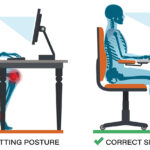Researchers say bold policy changes are required to turn around an inconsistent approach to low back pain management.
A new Global Burden of Disease (GBD) study estimates there were over 600 million people affected by low back pain in 2020, with modelling predicting more than 800 million cases worldwide in 2050.
As the leading cause of disability in most countries, the finding sounds alarm bells for health systems, workforces and economies dealing with its social and financial consequences.
The study, which was published in the Lancet Rheumatology, analysed GBD data from 1990 to 2020 from over 204 countries and territories to map the landscape of back pain cases over time.
While absolute numbers affected had increased over the thirty years, thanks to population growth and ageing, there was some good news in that rates of prevalence had decreased by 10% over that time. The researchers suggested this could be due to changes in manual labour or increased recovery.
Currently, around 4.13 million people in Australasia are affected by low back pain, and by 2050 that’s expected to blow out to around 5.49 million people.
At around 11%, the rate of prevalence in Australasia is higher than the global average of 7.5%, and slightly higher than many other high-income regions. Unlike other regions, the rate is not expected to reduce over time, mainly due to our ageing population.
Globally, more than a third of disability burden associated with low back pain was attributable to three modifiable factors: occupational ergonomic factors (prolonged sitting or standing, lifting or bending), smoking and being overweight. However, causal mechanisms have yet to be determined.
As a leading cause of workplace absenteeism, it may be surprising that in fact it’s people past working age who are most affected. The findings showed that low back pain increases with age, reaching a peak rate at the age of 85, with significant consequences for an ageing population.
“It is known from previous research that, compared with younger adults, older adults are more likely to be severely incapacitated by low back pain, with loss of mobility and independence, leading to greater care needs,” wrote the authors.
First author Professor Manuela Ferreira, from the University of Sydney, pointed out that some current clinical guidelines for back pain treatment and management don’t provide specific recommendations for older people.
“Older people have more complex medical histories and are more likely to be prescribed strong medication, including opioids for back pain management, compared to younger adults. But this is not ideal and can have a negative impact on their function and quality of life, especially as these analgesics may interfere with their other existing medications,” she said.
“This is just one example of why we need to update clinical guidelines to support our health professionals.”
Professor Ferreira says there is a lack of consistency in how health professionals manage back pain cases and how the healthcare system needs to adapt.
Inappropriately high usage of imaging, prescribed bed rest, opioids, spinal injections and other invasive procedures of questionable efficacy are still widely used.
“Our analysis paints a picture of growing low back pain cases globally, putting enormous pressure on our healthcare system. We need to establish a national, consistent approach to managing low back pain that is informed by research,” said Professor Ferreira.
The Australian Commission on Safety and Quality in Health Care clinical care standard for back pain, which was issued last year, “is a very good start” Professor Ferreira told Rheumatology Republic. She also pointed to the NSW Agency for Clinical Innovation LBP Model of Care, “which is a good guide for the management of acute low back pain,” she said.
“Currently, how we have been responding to back pain has been reactive. Australia is a global leader in back pain research; we can be proactive and lead by example on back pain prevention”, said Professor Ferreira.
Professor Ferreira is principal investigator on two clinical trials that look to address back pain:
- TEXT4myBACK is investigating whether education and advice about back pain, delivered by text message, can help people manage their back pain.
- SUrgery for Spinal Stenosis (SUcceSS) is a placebo-controlled trial of decompression surgery for spinal stenosis.





